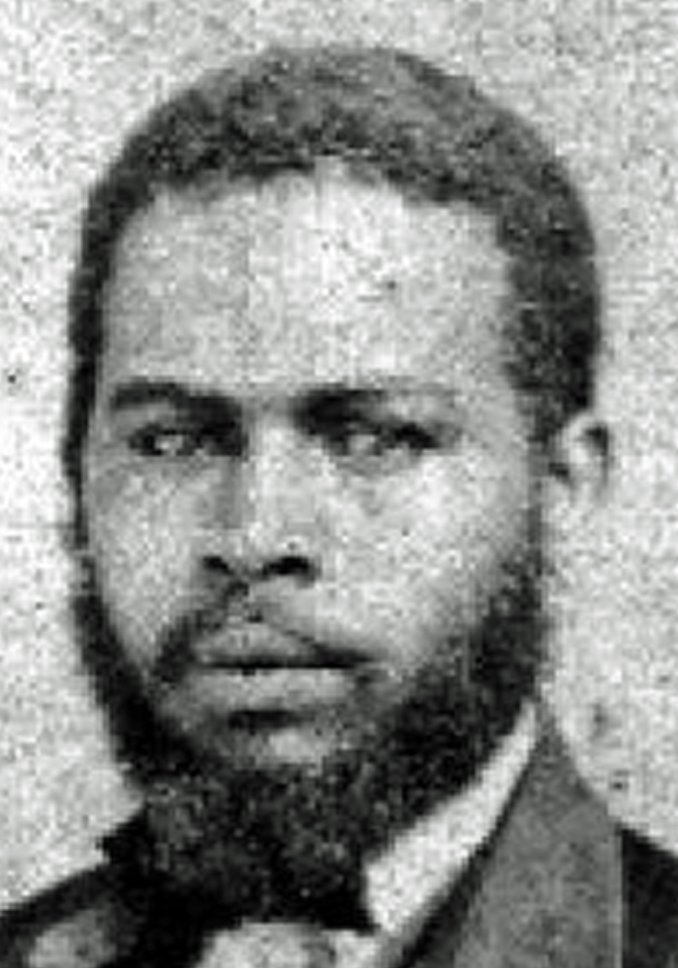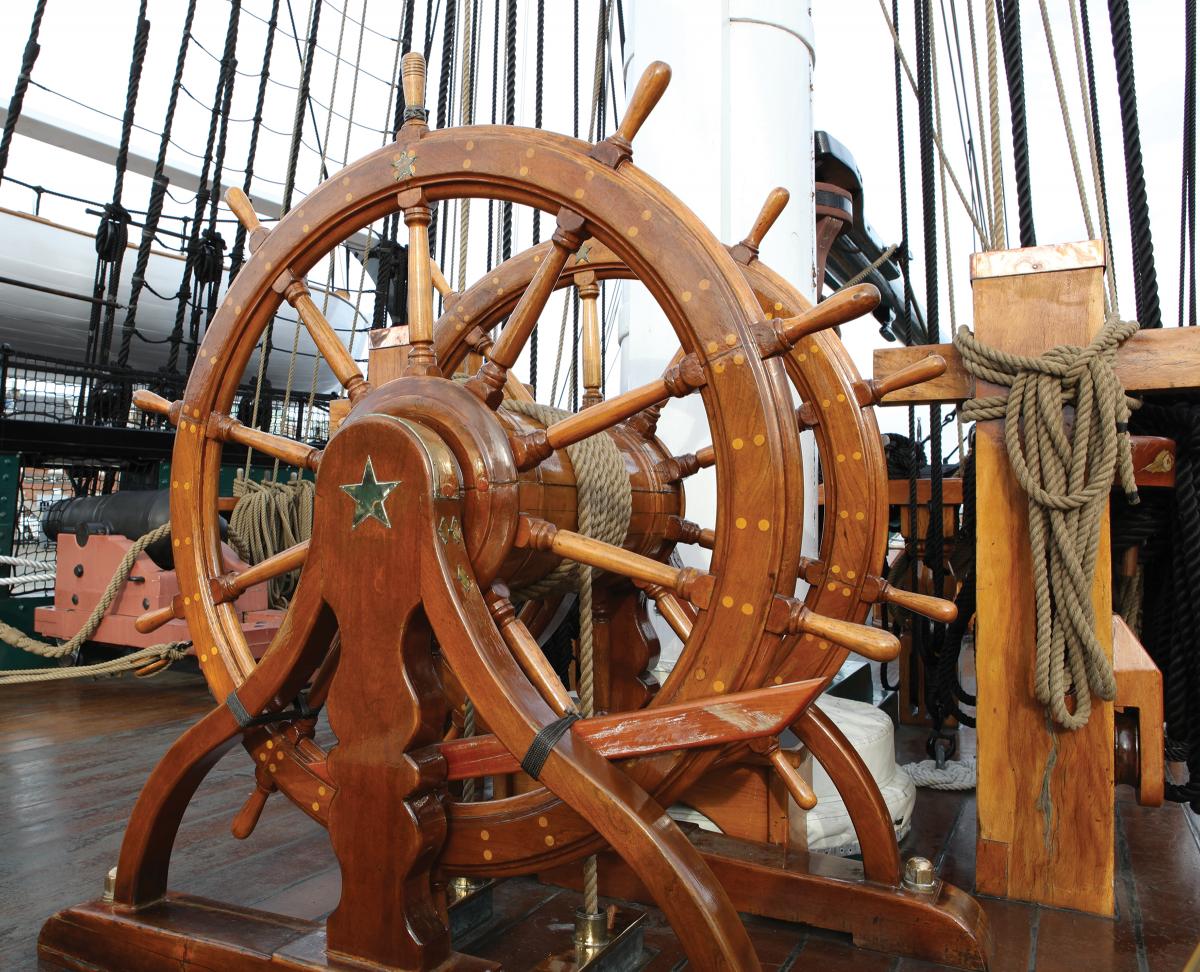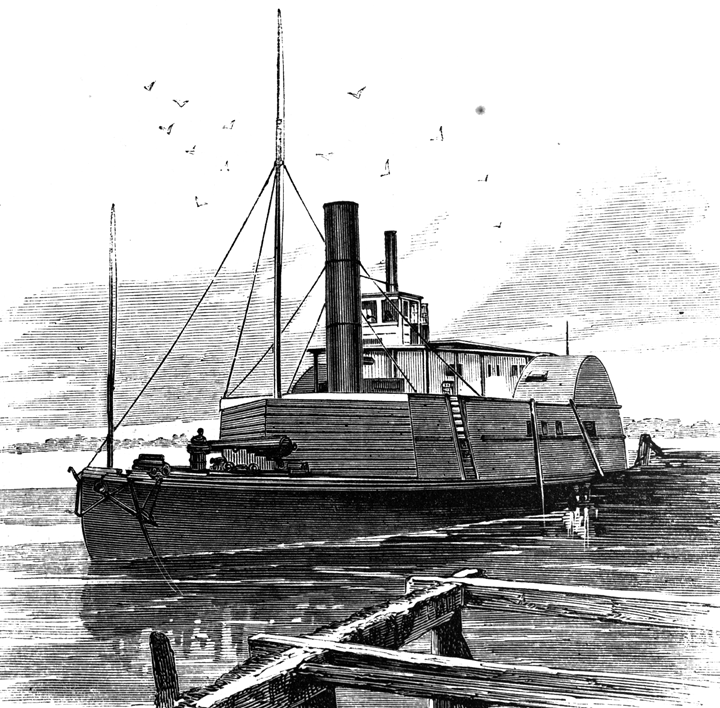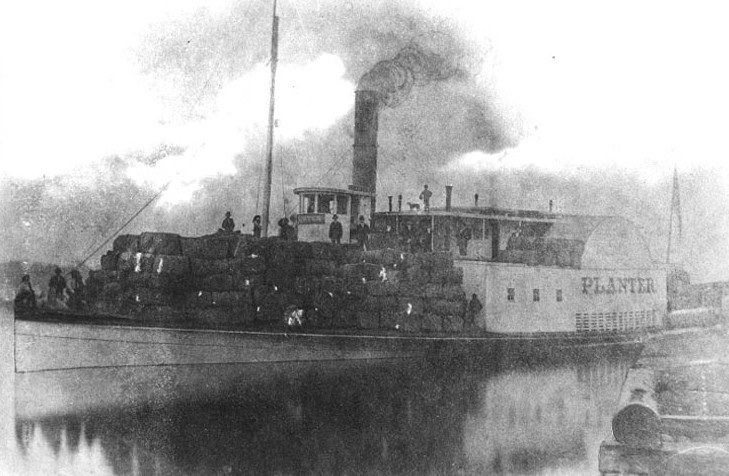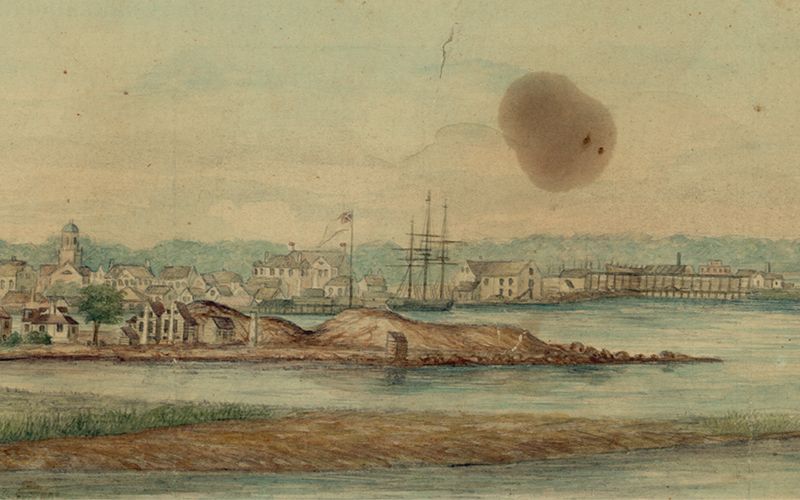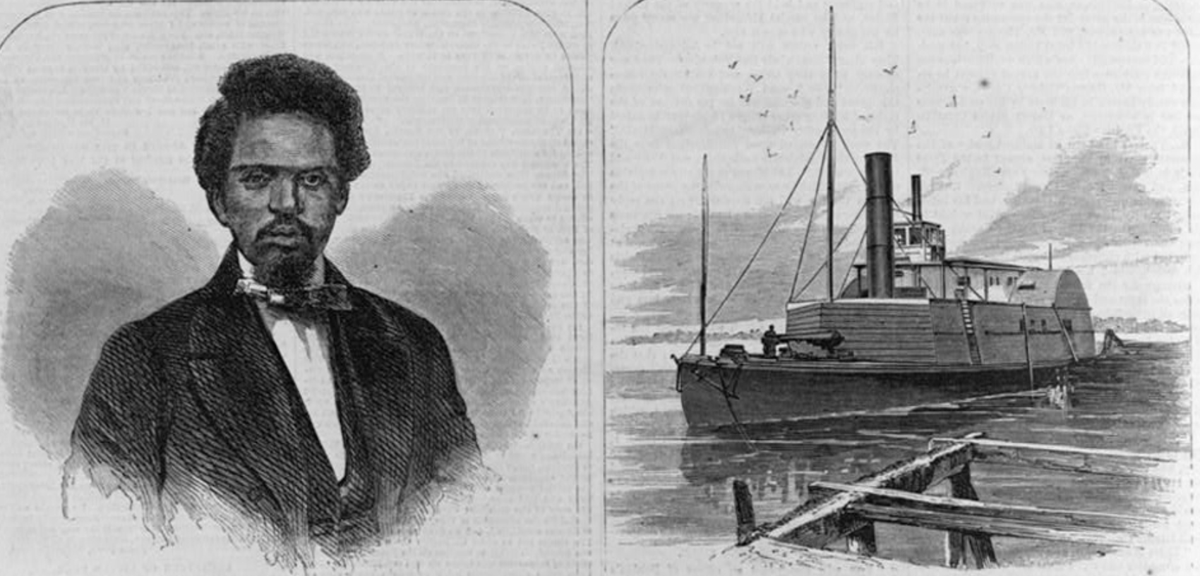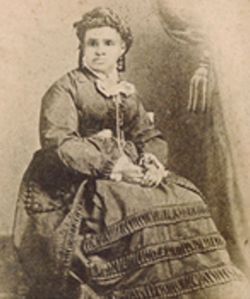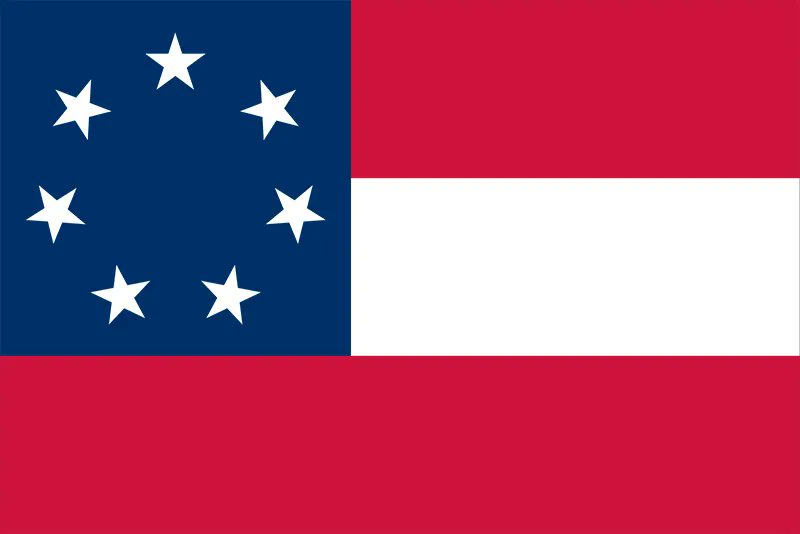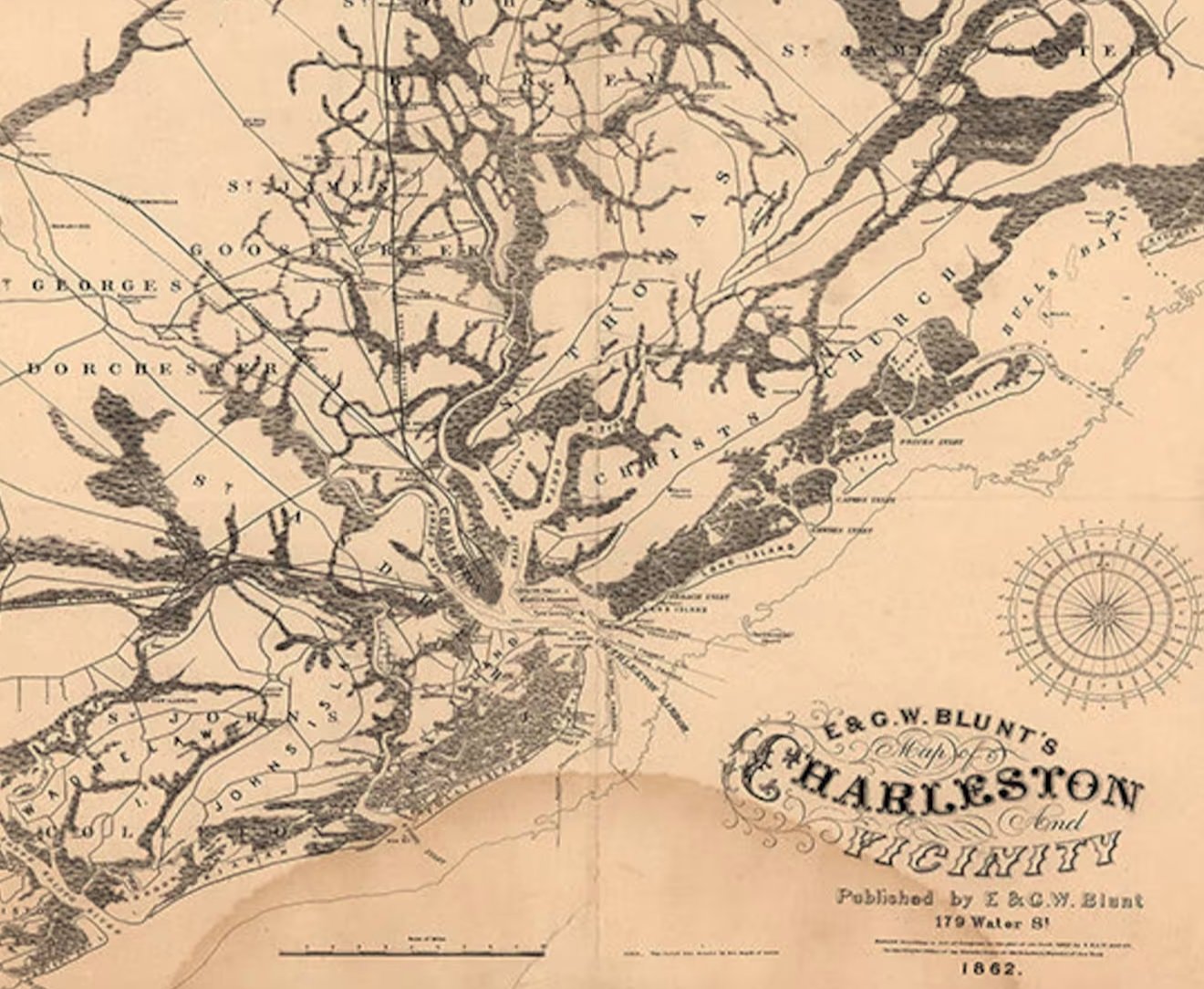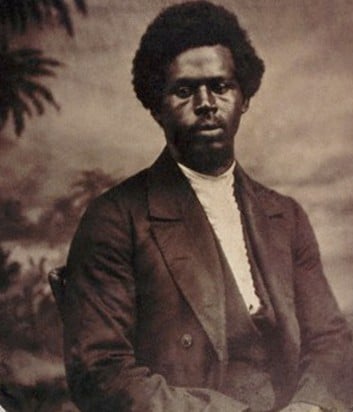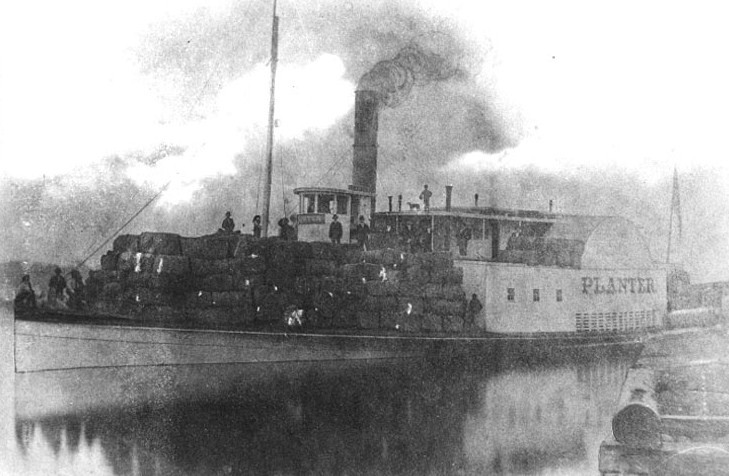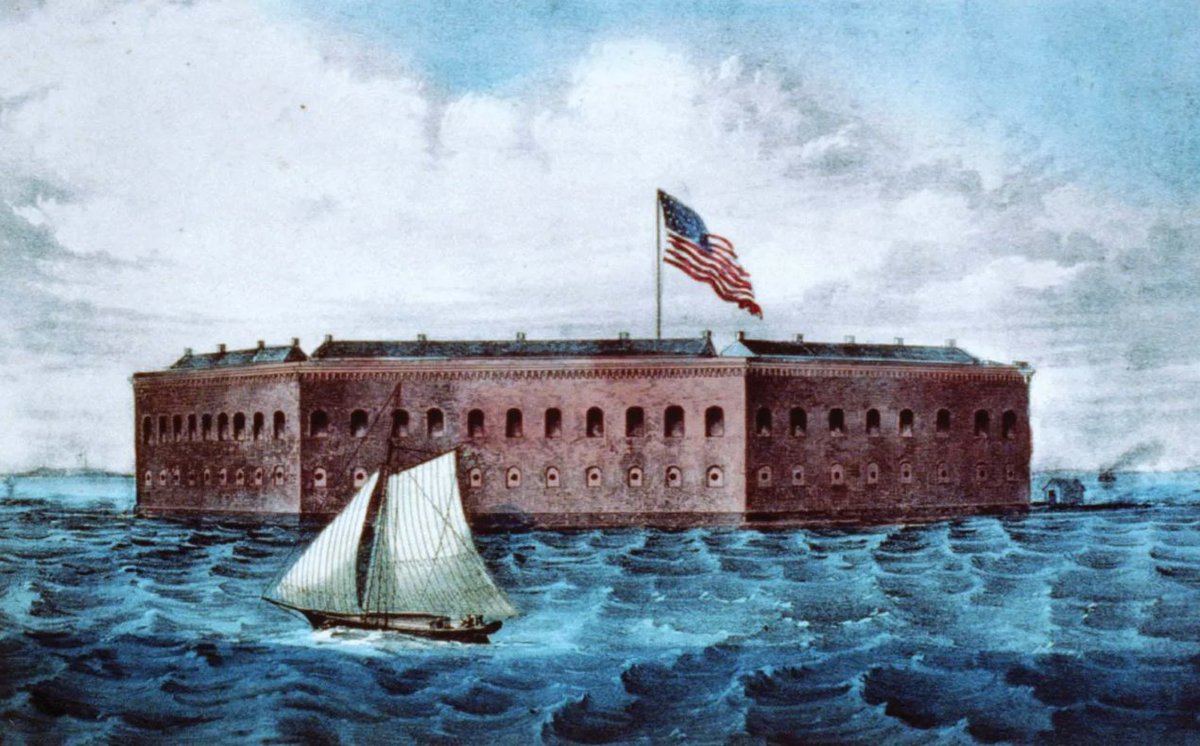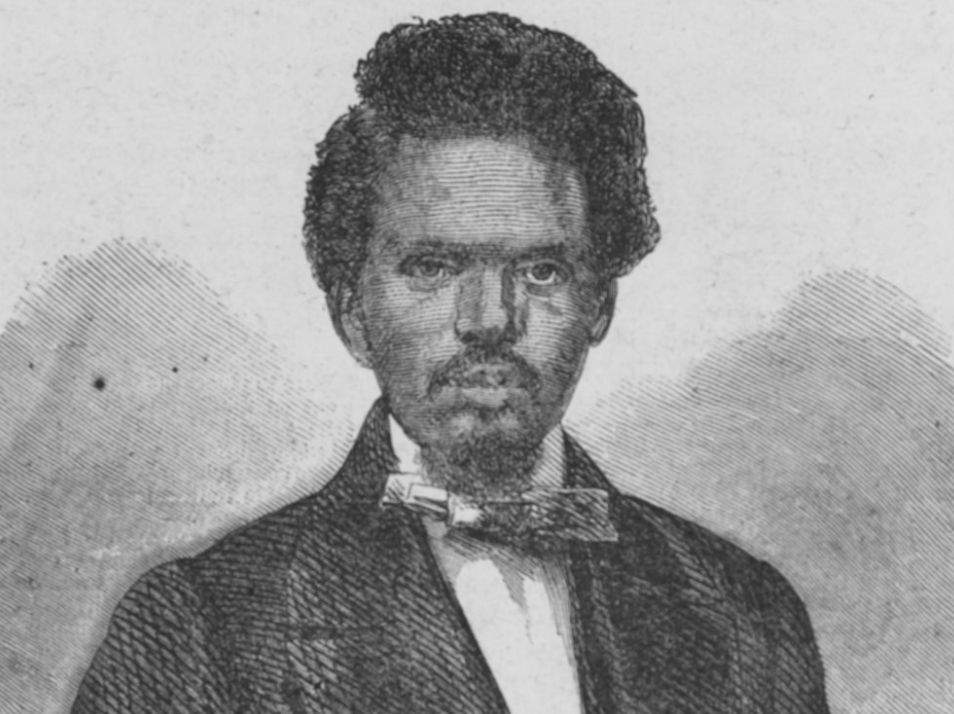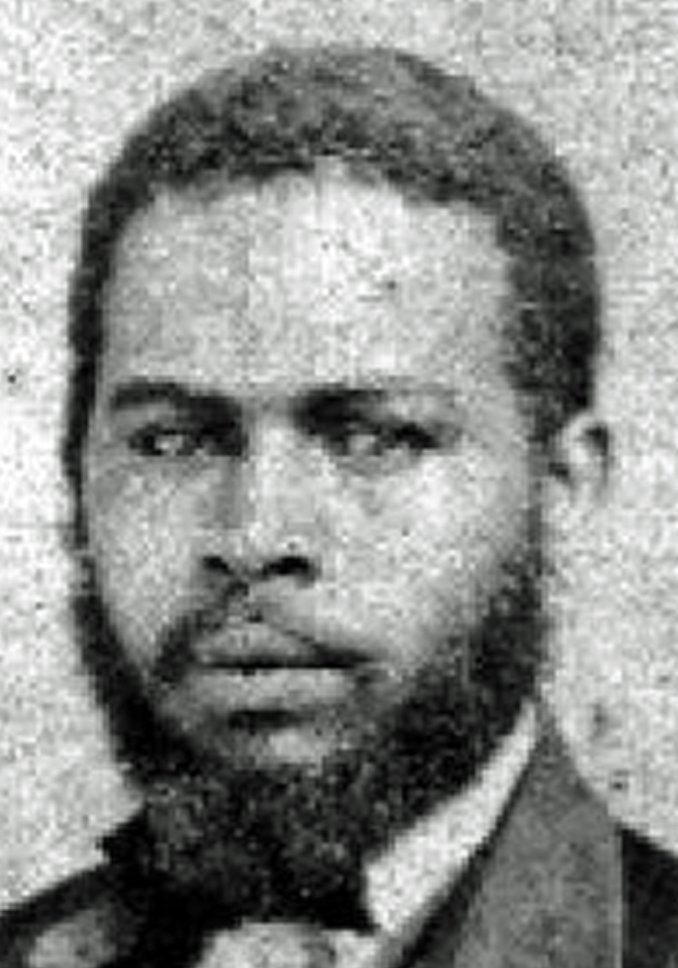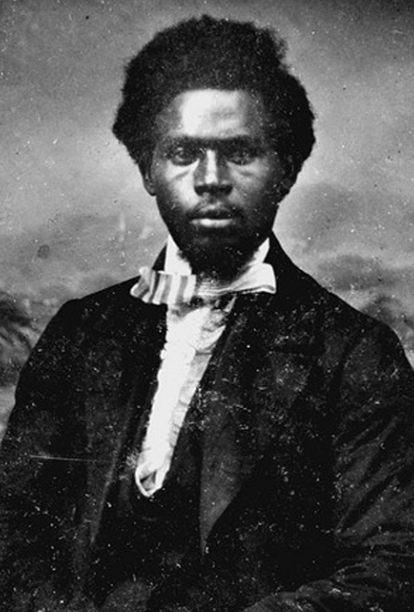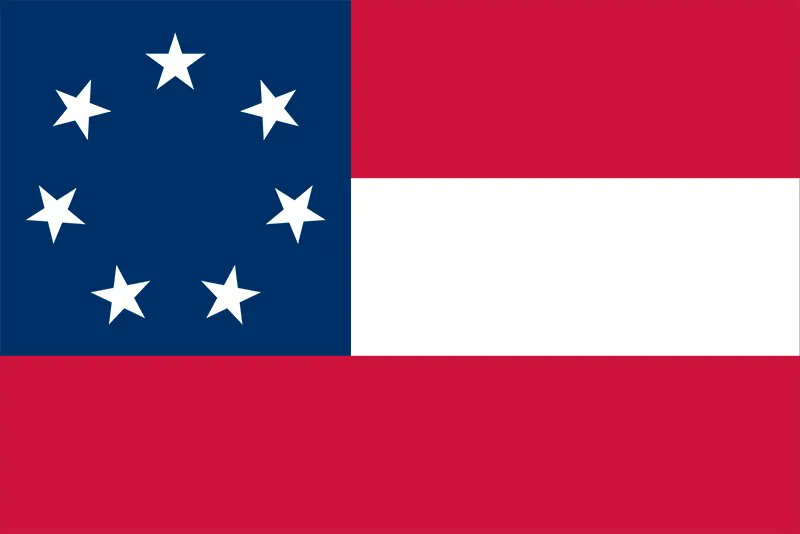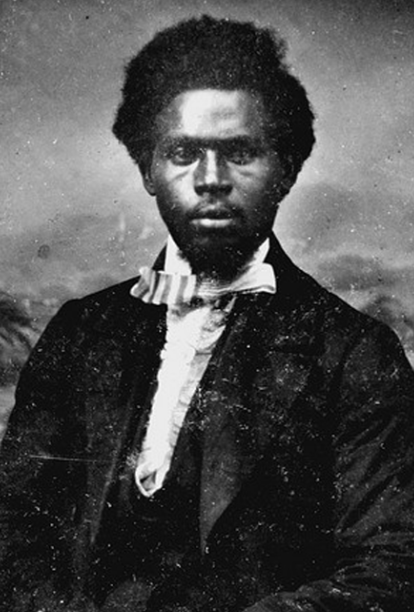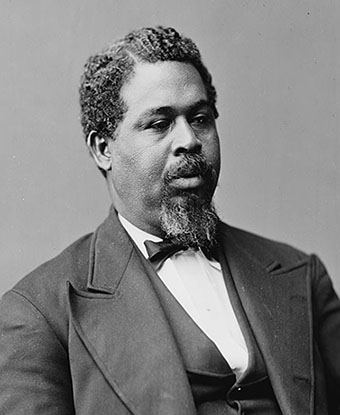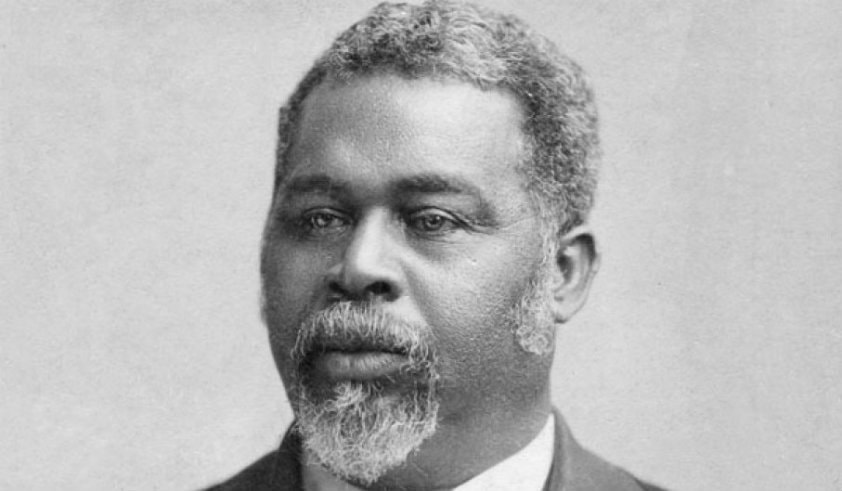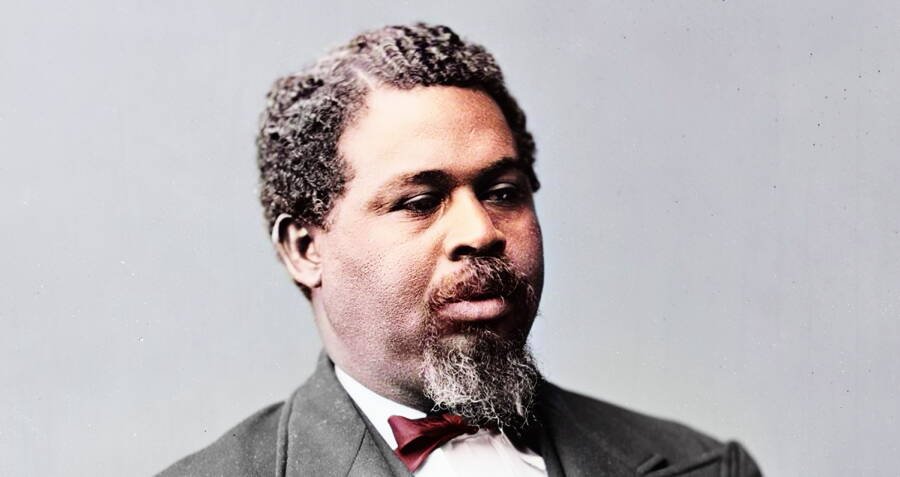Thread by David Zabinsky
- Tweet
- Apr 5, 2023
- #HistoryofTechnology
Thread
A 147 foot steamship, a straw hat, and an ingenious plan.
That's what it took for Robert Smalls - born this day in 1839 - to execute the most improbable and daring maritime mission the world may have ever seen.
A story:
That's what it took for Robert Smalls - born this day in 1839 - to execute the most improbable and daring maritime mission the world may have ever seen.
A story:
We start in 1862.
Robert Smalls - the 23-year-old from South Carolina seen here - is a "wheelman."
Have any idea what the hell a wheelman is?
Ha.
Neither did I.
Robert Smalls - the 23-year-old from South Carolina seen here - is a "wheelman."
Have any idea what the hell a wheelman is?
Ha.
Neither did I.
A wheelman is a helmsman.
A steersman.
A maritime pilot.
You get the point - a wheelman is the guy that steers the ship.
But these terms...
Helmsman, steersman, pilot...
They exude status.
And power.
And class.
A steersman.
A maritime pilot.
You get the point - a wheelman is the guy that steers the ship.
But these terms...
Helmsman, steersman, pilot...
They exude status.
And power.
And class.
But Robert Smalls, for white folks in South Carolina?
He's got none of this.
Because he's black.
And a slave.
So, he's given another name:
Wheelman.
Even though he's a damn good pilot...
Better, and braver - as we'll soon see - than any other in South Carolina.
He's got none of this.
Because he's black.
And a slave.
So, he's given another name:
Wheelman.
Even though he's a damn good pilot...
Better, and braver - as we'll soon see - than any other in South Carolina.
Which likely begs for you another question:
If Smalls is a slave, how is he allowed behind the wheel of a ship?
Well, Smalls works on the CSS Planter, seen here - alongside five other slaves.
And the Planter, believe it or not, is a military ship.
A Confederate military ship.
If Smalls is a slave, how is he allowed behind the wheel of a ship?
Well, Smalls works on the CSS Planter, seen here - alongside five other slaves.
And the Planter, believe it or not, is a military ship.
A Confederate military ship.
It's there that Smalls steers the Planter around South Carolina waters, taking her on both dispatch and transport missions for his Confederate officers.
Confederate officers that use him - Smalls - to protect their right (if they win the war) to keep him enslaved.
Imagine that.
Confederate officers that use him - Smalls - to protect their right (if they win the war) to keep him enslaved.
Imagine that.
But it's not just Smalls his officers want to keep enslaved.
It's his wife Hannah.
And their four-year-old Elizabeth.
And their newborn son Robert Jr.
Smalls and his family were all born slaves.
And they think they'll all die slaves, too.
Unless, of course…
They escape.
It's his wife Hannah.
And their four-year-old Elizabeth.
And their newborn son Robert Jr.
Smalls and his family were all born slaves.
And they think they'll all die slaves, too.
Unless, of course…
They escape.
But an escape to freedom…in Confederate stronghold South Carolina…in the midst of the Civil War…with two children in tow?
It's a death sentence.
Literally.
If Smalls and his family are to be caught, they’ll be beat, separated and sold off like cattle, or worse:
Killed.
It's a death sentence.
Literally.
If Smalls and his family are to be caught, they’ll be beat, separated and sold off like cattle, or worse:
Killed.
But for Smalls, it's a price worth paying in the pursuit of freedom.
Not just for him, but for his children.
So, he gets to work, silently planning in his head how he'll carry out what seems like an impossible escape.
By day or by night, he wonders?
By land or by sea?
Not just for him, but for his children.
So, he gets to work, silently planning in his head how he'll carry out what seems like an impossible escape.
By day or by night, he wonders?
By land or by sea?
And after months and months of deliberate thought, Smalls finally decides:
He and his family will travel by night.
And by sea.
And no, it won't be by jumping from the Carolina shore and swimming hundreds of miles towards the north.
He and his family will travel by night.
And by sea.
And no, it won't be by jumping from the Carolina shore and swimming hundreds of miles towards the north.
Instead?
Robert Smalls and his family will flee by ship.
That is, he is about to SEIZE from the Confederate military...
The one, the only:
CSS Planter.
Robert Smalls and his family will flee by ship.
That is, he is about to SEIZE from the Confederate military...
The one, the only:
CSS Planter.
But before anything, Smalls has to get his wife on board.
Figuratively, that is.
And she's terrified.
But brave like her husband.
"It is a risk, dear," she tells him.
"But you and I, and our little ones must be free."
She adds:
"I will go, for where you die, I will die."
Figuratively, that is.
And she's terrified.
But brave like her husband.
"It is a risk, dear," she tells him.
"But you and I, and our little ones must be free."
She adds:
"I will go, for where you die, I will die."
Then, Smalls tells his crew members.
His crew members?! you ask.
Well, yeah.
Think about it:
How else will Smalls commandeer the Planter – a 147 foot ship, mind you – and sail it past heavily armed Confederate checkpoints without the support of a team?
His crew members?! you ask.
Well, yeah.
Think about it:
How else will Smalls commandeer the Planter – a 147 foot ship, mind you – and sail it past heavily armed Confederate checkpoints without the support of a team?
So Smalls outlines his plan to the crew.
And Smalls' plan?
It's complicated.
And high-risk.
First, to pull this off, he tells them, they'll have to wait for the ship's three white officers to ALL get off the ship at once...
Which barely ever happens.
Like, at all.
And Smalls' plan?
It's complicated.
And high-risk.
First, to pull this off, he tells them, they'll have to wait for the ship's three white officers to ALL get off the ship at once...
Which barely ever happens.
Like, at all.
Second, Smalls says, after the Planter leaves the dock, they'll have to then IMPERSONATE their white superiors in order to pass Confederate checkpoints as they sail north.
Impersonate white folk to a bunch of Johnny Rebs?!
Smalls is crazy, the crew thinks.
Batshit crazy.
Impersonate white folk to a bunch of Johnny Rebs?!
Smalls is crazy, the crew thinks.
Batshit crazy.
But, nonetheless, the crew agrees.
The pursuit of liberty…of emancipation…and of freedom, is a pursuit worth dying for, they conclude.
The pursuit of liberty…of emancipation…and of freedom, is a pursuit worth dying for, they conclude.
So every night, with knots in their stomachs, the crew waits for Smalls' go-ahead.
The right time.
The moment their three white officers - Captain Charles Relyea, Samuel Hancock, and Samuel Pitcher - all get off the ship at once.
But it never happens.
The right time.
The moment their three white officers - Captain Charles Relyea, Samuel Hancock, and Samuel Pitcher - all get off the ship at once.
But it never happens.
Until a warm spring evening on May 13th, 1862.
Docked only a few miles away from Fort Sumter, the Planter and its crew melodically rock with the Atlantic Ocean waves...
The city of Charleston behind them and the unknown abyss in front.
Docked only a few miles away from Fort Sumter, the Planter and its crew melodically rock with the Atlantic Ocean waves...
The city of Charleston behind them and the unknown abyss in front.
And then, out of nowhere...
It happens.
Relyea, Hancock, and Pitcher all step off the ship.
Together.
At once.
For Smalls and his crew...
It's now or never.
Go-time.
It happens.
Relyea, Hancock, and Pitcher all step off the ship.
Together.
At once.
For Smalls and his crew...
It's now or never.
Go-time.
Without looking back, Smalls revs her up.
Steam gradually exits the Planter's smoke stack like a tea kettle, slowly pulling away from shore, the Dixie flag flying high.
From afar, it seems a Confederate vessel on a routine mission.
But from on board, it's anything but.
Steam gradually exits the Planter's smoke stack like a tea kettle, slowly pulling away from shore, the Dixie flag flying high.
From afar, it seems a Confederate vessel on a routine mission.
But from on board, it's anything but.
The first test?
The Confederate guard and policeman that sit only 50 yards away.
But why think anything of it?
How would a crew of six slaves be capable of SEIZING, let alone take off with a Confederate ship, right?
So they watch the Planter sail off...
Never batting an eye.
The Confederate guard and policeman that sit only 50 yards away.
But why think anything of it?
How would a crew of six slaves be capable of SEIZING, let alone take off with a Confederate ship, right?
So they watch the Planter sail off...
Never batting an eye.
The next test?
Picking up Smalls’ family.
Don't worry.
He didn't forget about them.
Like clockwork, Smalls pulls into the North Atlantic Wharf, where Hannah, Elizabeth, Robert Jr., and several others hop aboard.
But all of this?
Well...
This is just the easy part.
Picking up Smalls’ family.
Don't worry.
He didn't forget about them.
Like clockwork, Smalls pulls into the North Atlantic Wharf, where Hannah, Elizabeth, Robert Jr., and several others hop aboard.
But all of this?
Well...
This is just the easy part.
Because from there, with 16 people on board, Smalls steers the Planter towards the most intimidating, perilous obstacle he could ever imagine:
Fort Sumter -
A Confederate stronghold, protected by 50 foot towering walls and dangerously equipped Confederate soldiers.
Fort Sumter -
A Confederate stronghold, protected by 50 foot towering walls and dangerously equipped Confederate soldiers.
Everyone on board knows getting past Fort Sumter is the ultimate test.
It is - in every sense - a matter of life or death.
"When we drew near the fort," one crew member recounts, "every man but Robert Smalls felt his knees giving way...
And the women began crying and praying."
It is - in every sense - a matter of life or death.
"When we drew near the fort," one crew member recounts, "every man but Robert Smalls felt his knees giving way...
And the women began crying and praying."
So here comes Smalls' biggest challenge:
Impersonating a white Confederate officer.
As Smalls approaches, he gets into character.
He puts on Captain Relyea’s straw hat and pulls the whistle cord to let on he is a true Confederate pilot:
Two long blows and a short one.
Impersonating a white Confederate officer.
As Smalls approaches, he gets into character.
He puts on Captain Relyea’s straw hat and pulls the whistle cord to let on he is a true Confederate pilot:
Two long blows and a short one.
The Confederates at Fort Sumter buy it.
Every last bit.
"Blow the damned Yankees to hell, or bring one of them in!" they yell in encouragement as the Planter sails on by towards what they think is battle against the North.
"Aye, aye!" Smalls says back with a smile ear-to-ear.
Every last bit.
"Blow the damned Yankees to hell, or bring one of them in!" they yell in encouragement as the Planter sails on by towards what they think is battle against the North.
"Aye, aye!" Smalls says back with a smile ear-to-ear.
Sailing towards the north and standing tall and proud at the wheel, Smalls is mere "wheelman" no more.
In fact, he's not even helmsman, either.
Or steersman.
Or pilot.
Because tonight, en route to freedom, deservingly so -
Robert Smalls is Captain.
In fact, he's not even helmsman, either.
Or steersman.
Or pilot.
Because tonight, en route to freedom, deservingly so -
Robert Smalls is Captain.
But this show isn't over just yet.
Remember - Smalls has the Planter gunning towards the North in the middle of a war...
With the Planter's Confederate Flag waving in the wind.
If a Union ship saw her and her flag from afar. she'd fire away.
No holds barred.
Remember - Smalls has the Planter gunning towards the North in the middle of a war...
With the Planter's Confederate Flag waving in the wind.
If a Union ship saw her and her flag from afar. she'd fire away.
No holds barred.
So the crew - once finally out of Fort Sumter's eyesight - take down the Confederate flag and replace it with a white one.
And it's a damn good thing they do.
And it's a damn good thing they do.
Because soon after does the Planter see within the distance a Union ship:
The Onward.
But a thick, springtime fog masks the Planter's newly erected white flag.
The Union Navy, as a consequence, sees red.
They're ready to blow the Planter and everyone on it to smithereens.
The Onward.
But a thick, springtime fog masks the Planter's newly erected white flag.
The Union Navy, as a consequence, sees red.
They're ready to blow the Planter and everyone on it to smithereens.
Before firing away, the Onward gives one final warning:
"Stop! Or I will blow you out of the water!," Union Lieutenant John Nickels yells.
Smalls - in a panic - puts the brakes on, allowing the Onward to approach and inspect the ship.
"Stop! Or I will blow you out of the water!," Union Lieutenant John Nickels yells.
Smalls - in a panic - puts the brakes on, allowing the Onward to approach and inspect the ship.
From there, sailing side-by-side, those on the Onward realize, with a sense of relief:
The Planter means no harm.
And those on the Planter realize, with a sense of euphoria:
They are free at last.
The Planter means no harm.
And those on the Planter realize, with a sense of euphoria:
They are free at last.
With the newly emancipated passengers of the Planter rejoicing in tears and hugs, Smalls - on the other hand - wastes no time in supporting his new compatriots:
The Union Navy.
The Union Navy.
"Good morning, sir!" Smalls yells towards an officer on the Onward.
"I’ve brought you some of the old United States guns, sir! That were for Fort Sumter, sir!"
Stole their ship AND their guns?
Not bad, Smalls.
Not bad at all.
"I’ve brought you some of the old United States guns, sir! That were for Fort Sumter, sir!"
Stole their ship AND their guns?
Not bad, Smalls.
Not bad at all.
And so is the story of how Robert Smalls sailed his family, his crew, and six others to freedom.
But perhaps more amazing than Smalls’ actual, ingenious escape from slavery was what he did with his life…afterwards.
But perhaps more amazing than Smalls’ actual, ingenious escape from slavery was what he did with his life…afterwards.
Smalls would serve in the US Military from 1862-1868, fighting bravely in 17 Civil War battles and helping the Union beat the Confederacy to reunite the country.
Following the war, he'd go on to have an illustrious business career in the construction and railroad industries.
Following the war, he'd go on to have an illustrious business career in the construction and railroad industries.
After success in the private sector, Smalls would become a US Congressman in 1875, representing the same state from which he - against all odds - escaped over a decade prior.
Yep.
You guessed it:
South Carolina.
Yep.
You guessed it:
South Carolina.
Learn something new today?
Follow me @DavidZabinsky
I’ll be telling stories like Smalls' - ones you’ve likely never heard before - every week.
Follow me @DavidZabinsky
I’ll be telling stories like Smalls' - ones you’ve likely never heard before - every week.
If you'd like to learn more about Robert Smalls (today would be his birthday, after all!), then you have to check out Cate Lineberry's book "Be Free Or Die" below:
www.amazon.com/Be-Free-Die-Amazing-Slavery/dp/1250101867
www.amazon.com/Be-Free-Die-Amazing-Slavery/dp/1250101867
Be sure to also check out her piece in The Smithsonian, a critically important source for this thread:
www.smithsonianmag.com/history/thrilling-tale-how-robert-smalls-heroically-sailed-stolen-confederate-...
www.smithsonianmag.com/history/thrilling-tale-how-robert-smalls-heroically-sailed-stolen-confederate-...

